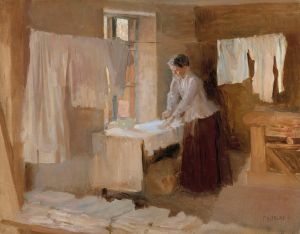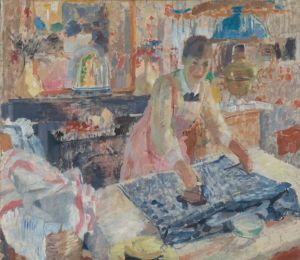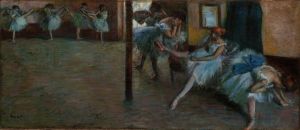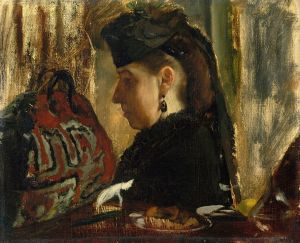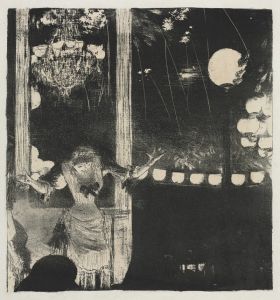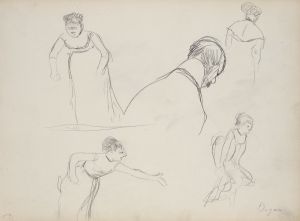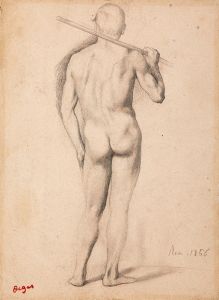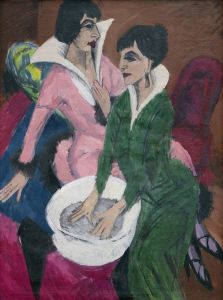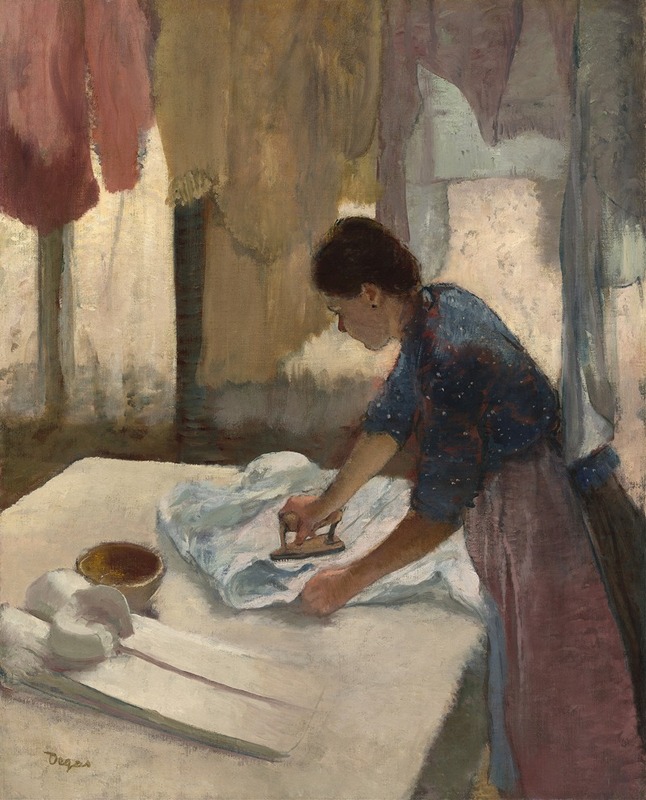
Woman Ironing
A hand-painted replica of Edgar Degas’s masterpiece Woman Ironing, meticulously crafted by professional artists to capture the true essence of the original. Each piece is created with museum-quality canvas and rare mineral pigments, carefully painted by experienced artists with delicate brushstrokes and rich, layered colors to perfectly recreate the texture of the original artwork. Unlike machine-printed reproductions, this hand-painted version brings the painting to life, infused with the artist’s emotions and skill in every stroke. Whether for personal collection or home decoration, it instantly elevates the artistic atmosphere of any space.
"Woman Ironing" is a painting by the renowned French artist Edgar Degas, known for his contributions to the Impressionist movement. Degas, who lived from 1834 to 1917, is celebrated for his innovative compositions and his focus on capturing modern life in Paris during the late 19th century. Although Degas is often associated with Impressionism, he preferred to be called a realist, and his work is characterized by its attention to detail, use of unusual perspectives, and emphasis on the human figure.
The painting "Woman Ironing" is part of Degas's exploration of domestic and labor scenes, a subject that he returned to frequently throughout his career. This particular work depicts a woman engaged in the act of ironing, a common household chore. Degas's interest in such themes reflects his broader fascination with the lives of working-class individuals and the everyday activities that defined their existence.
Degas's approach to depicting the woman ironing is notable for its realism and empathy. He captures the physicality of the task, emphasizing the woman's posture and the concentration required to perform her work. The painting is executed with a keen eye for detail, showcasing Degas's skill in rendering textures and materials, such as the fabric being ironed and the woman's clothing.
The composition of "Woman Ironing" is typical of Degas's style, with a focus on the human figure and a tendency to crop the scene in a way that suggests a moment captured in time. This technique creates a sense of immediacy and intimacy, drawing the viewer into the world of the subject. Degas often employed such compositional strategies to convey the dynamism and transience of modern life.
Degas's choice of subject matter in "Woman Ironing" aligns with his broader artistic interests. Throughout his career, he frequently depicted scenes of labor and leisure, including dancers, laundresses, and milliners. These works often highlight the physical demands of such occupations, as well as the grace and skill of those who perform them. By focusing on these themes, Degas provides a window into the social realities of his time, offering a nuanced portrayal of the working class in Paris.
"Woman Ironing" is a testament to Degas's ability to find beauty and significance in everyday life. His depiction of the ironing woman is both a celebration of her labor and a reflection on the broader social context in which she exists. Through his art, Degas invites viewers to consider the dignity and complexity of ordinary people and their daily routines.
As with many of Degas's works, "Woman Ironing" is characterized by its subtle use of color and light. Degas often employed a muted palette, focusing on tonal variations to create depth and atmosphere. This approach is evident in "Woman Ironing," where the interplay of light and shadow adds to the realism and emotional impact of the scene.
Overall, "Woman Ironing" exemplifies Edgar Degas's mastery of capturing the human experience with sensitivity and insight. The painting remains a significant example of his work, reflecting his commitment to portraying the realities of modern life with honesty and artistry.







